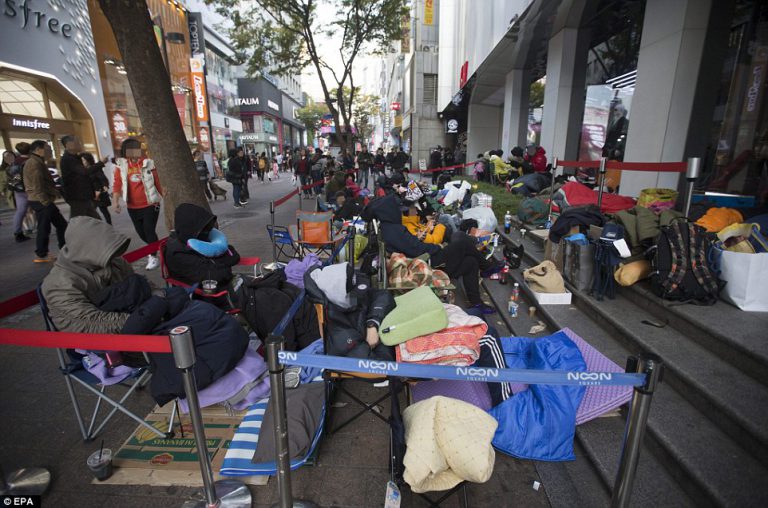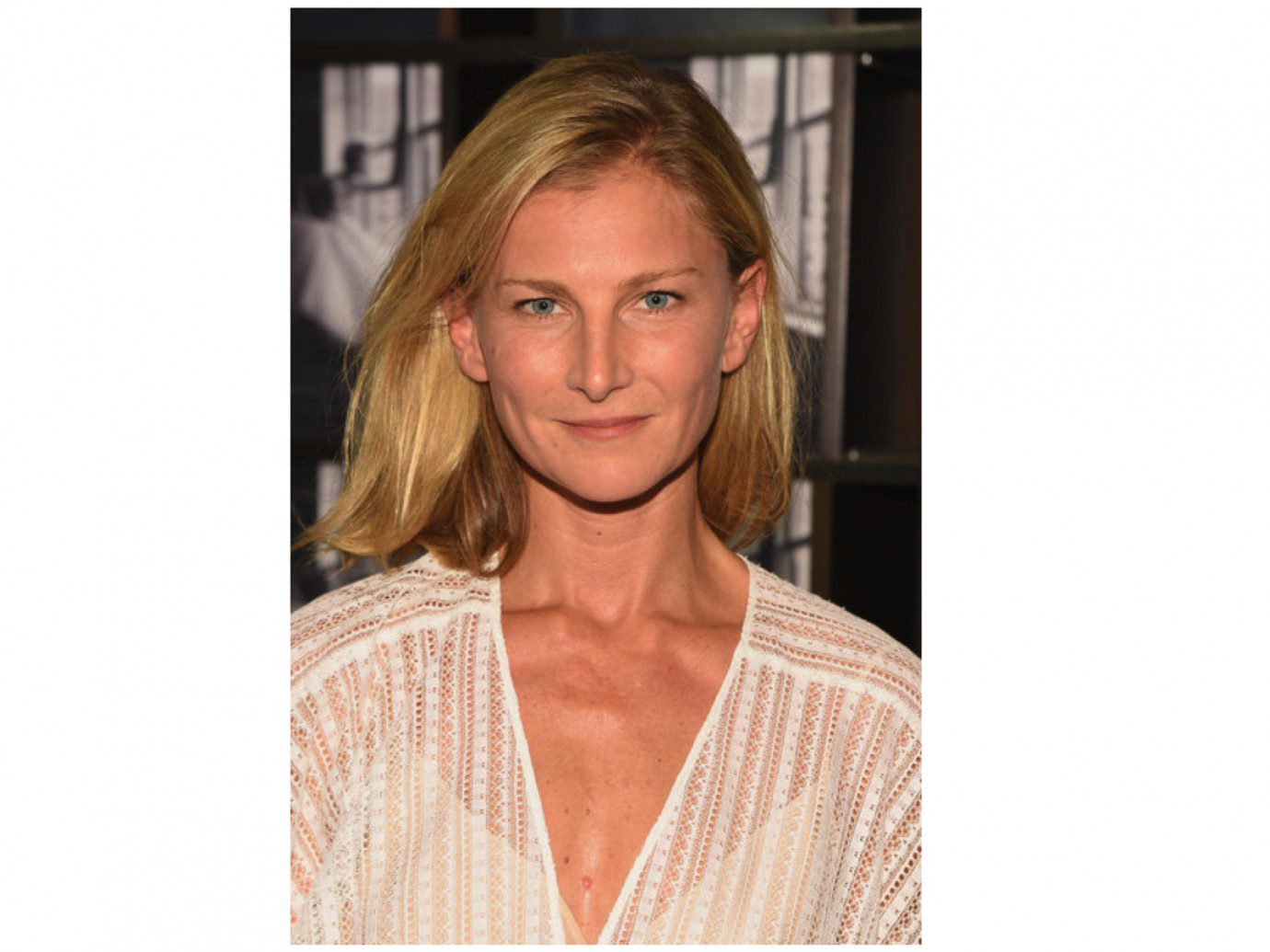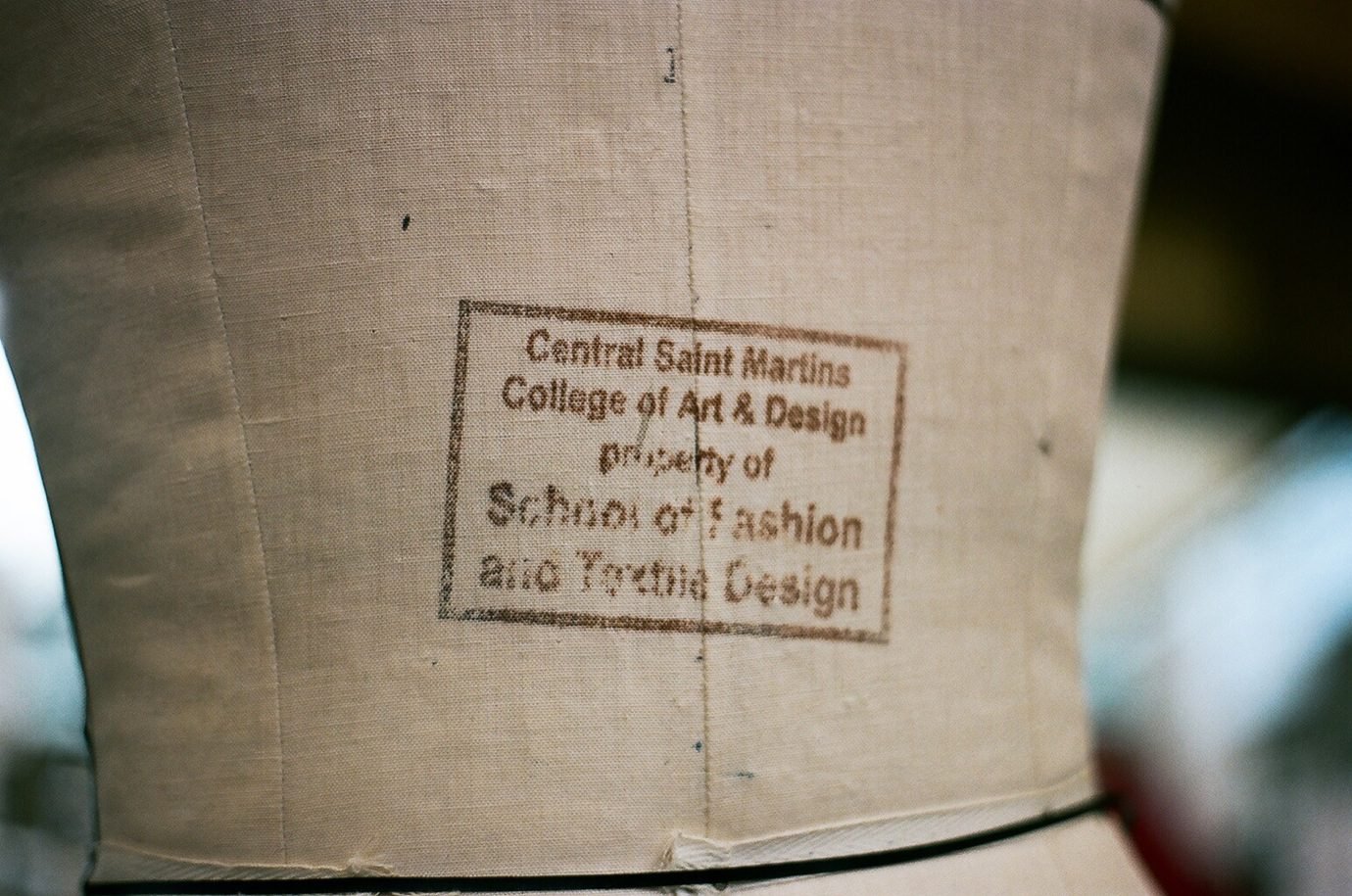“IT WAS IRONIC THAT PEOPLE WERE LONGING TO PURCHASE A SLICE OF THE LUXURY BALMAIN LIFESTYLE YET HAD TO SLEEP ON THE STREET, FIGHT WITH ONE ANOTHER AND ESSENTIALLY LIVE LIKE TRAMPS FOR DAYS BEFORE.”
Olivia Murphy, a second year student on the BA Fashion Journalism course, witnessed the hilarity first hand. She arrived at H&M at 6:00 in the morning to observe the masses and question them on sustainability. “I was expecting a lot of people who were crazy for the Balmain brand and ‘lifestyle’ that is projected all over social media,” states Murphy. “It was inevitable that the launch was going to be manic, but what I saw was unexpected. People had been queuing for days, sleeping in the streets, with camping chairs, sleeping bags — the lot! It was ironic that people were longing to purchase a slice of the luxury Balmain lifestyle, yet had to sleep on the street, fight with one another and essentially live like tramps for days before. That doesn’t scream luxury to me. Interesting to note, in the first third of the queue — I would say — were 20% genuine customers and 80% were buying to resell for double the price. People bought wristbands for £200 just to get in early. I just had to laugh at it all, really. When it hit 9:00, the best way I can describe the situation of the security guard on the door attempting to manage the crowds, is with the scene in Titanic where people are fighting to get on the life boats: ‘get back, women and children first,’ only it was ‘get back, green wrist bands first.’” Comparing the scene of this launch to a film about a historical tragedy may seem extreme, but it’ll only take an Instagram video of a hoard of shoppers, trampling over one another for a chance at a £400 beaded dress (now being sold on eBay to saps willing to spend anywhere from £600-£1600) to see the accuracy of Murphy’s observation. Her classmate Jan Grochowski joined her with a film camera, and echoed Murphy’s disbelief. “People queued for two days just so they could sell the clothes on the street outside of H&M. Everything was sold out in an hour. Nobody knew why they really wanted to buy the clothes. All anyone could say is ‘it’s Balmain’ and that they knew the brand because of the Kardashians and Olivier Rousteing… It was an awful experience and I will never take part in it again.”
“THE BEST WAY I CAN DESCRIBE THE SITUATION OF THE SECURITY GUARD ON THE DOOR ATTEMPTING TO MANAGE THE CROWDS IS WITH THE SCENE IN TITANIC WHERE PEOPLE ARE FIGHTING TO GET ON THE LIFE BOATS.”
Balmain’s creative director, Olivier Rousteing, commented that he believes H&M chose him because, “they were thinking, Olivier is so digital, so about the new generation and social media, so about his Balmain army.” We can only assume that the “digital” aspect relates to his 1.7 million Instagramfollowers. As for the new generation, well, no one can argue that his clientele and razor-edged cheekbones haven’t helped him to reach a mass market. Sara Kiani, in her final year on the Womenswear course admits, “I don’t care much for Balmain, it’s not really my thing, but the collection looks very ‘Balmain’ and I guess that’s a success for a high street brand.” First year Fashion Journalism student, Sam Burns, disagrees. “I thought it was tacky and quite cheap looking,” Burns contests, “it didn’t really fit the demographics of an H&M shopper. There were things that were being sold up to 400 pounds which is ridiculous, considering it’s supposed to be a line that is accessible to all.” While it is doubtful that many of these young followers know anything about Pierre Balmain, or for that matter can pronounce it, the power of social media is a major aspect in this collaboration’s success. They’ve enveloped themselves into the belief that these clothes, however hideous, will attach them to Rousteing’s army of supermodels and starlets. Lydia Chan, a second year Fashion Communications and Promotions student who used to work at H&M adds, “It’s kind of silly, without the Balmain logo on the garments I don’t think anyone would line up for them… these collabs feel like substance-less one-hit-wonder pop stars, like borrowed fame.”
“IF A KARDASHIAN IS WEARING IT—DON’T.”
We can all point fingers at who is supposedly behind this lunacy, but Olya Kuryshchuk, our founder and editor-in-chief, isn’t looking to one person blame: “I think that the Balmain x H&M collaboration is the culmination of everything that is currently happening in fashion industry. Brands are paying magazines, bloggers and other fashion media, so none of them critiques anything, and they will be forced to promote any shit if it is paid for. How many total looks can we keep seeing? It teaches the reader what is “good”, as all those big glossy magazines said that, and sent you like 200 newsletters with the lookbook and what celebrity already wore it. Then take a look at social media, where no one cares about the talent or quality anymore, but if someone has a high level of followers reached by an everyday selfie. And then the customers — who are completely dumbed by click bait media (all those posts about avocado sandwiches, cats and Kardashians) — are running to buy something utterly ugly, made by slaves, to feel cool and loved, while those poor guys will actually look so vulgar in that stuff.Imagine someone wearing that on the streets of London!” There you have it folks. The industry has been building up to this. Fast fashion, endorsements and, most worrying, unethical labor, unite to push out this catastrophic mix of sequins and faux-fur. Is it worth it? For a piece of a fashion house galaxies away from its essence, are you willing to ‘invest’ hundreds of pounds? Are you willing to ignore the lives of the workers who spent endless hours beading that ostentatious jacket, for a small sliver of Instagram glory? When in doubt, just remember the endearing words of Tim Gunn: “If a Kardashian is wearing it—don’t.”
Words by Rachel Cohen









